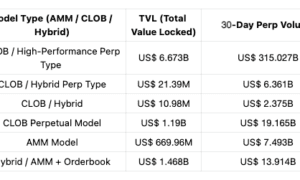In today’s digital landscape, the speed and performance of a website can make all the difference in retaining users and improving engagement. With users demanding seamless experiences, optimizing front-end performance has never been more crucial. Raman Bhaumik, a recognized expert in web development, has led the charge in advancing front-end optimization techniques that focus on speed, efficiency, and user satisfaction. In this article, we explore Raman’s unique approach to optimizing front-end performance and uncover strategies that every developer can apply to enhance their website’s speed and user experience.
What is Front-End Optimization?
Front-end optimization refers to a series of best practices and strategies aimed at improving the performance of the elements users interact with directly—the front-end of a website. This includes reducing load times, optimizing resources, and creating a smooth, responsive experience across devices. The end goal is to ensure a site runs efficiently, giving users the content they need in the least amount of time, while also reducing the strain on servers and networks.
Unlocking the Secrets to Front-End Optimization
When it comes to front-end optimization, Raman Bhaumik’s methods go beyond conventional approaches. Her strategies are built on a deep understanding of both performance engineering and user behavior, resulting in powerful, practical techniques that deliver measurable improvements.
Raman emphasizes, “Optimization isn’t just about speeding up load times—it’s about ensuring that the user experience is fluid, intuitive, and seamless, regardless of where they’re accessing your site.”
Here are some of the key insights and strategies Raman incorporates in her optimization approach:
Streamlining Resource Loading
“Efficient resource loading is the cornerstone of a fast-loading website,” Raman explains. Her technique focuses on loading only critical resources initially and deferring less important content for later. By prioritizing the elements that users need right away, websites can deliver content faster. Tools like lazy loading and asynchronous loading of scripts allow developers to manage when resources are loaded, improving perceived speed and reducing unnecessary server load.
Minimizing HTTP Requests
“Each HTTP request your site makes adds a little more time to the loading process,” Raman says. Reducing the number of HTTP requests is key to speeding up a website. Raman’s method involves combining CSS and JavaScript files, using image sprites for icons, and leveraging newer protocols like HTTP/2 to improve performance. Fewer requests mean faster page loading, and this is one of the simplest ways to optimize front-end performance.
Image Optimization for Performance
One of the most common performance bottlenecks is large, unoptimized images. Raman highlights, “Images are often the heaviest assets on a page. By optimizing them, we can make a huge difference in load times without sacrificing quality.” She advocates using formats like WebP, which offer smaller file sizes while maintaining high visual quality, and implementing responsive images to adjust file sizes based on the user’s device. Additionally, using image compression tools to reduce file sizes without losing clarity is crucial to optimizing load times.
Efficient CSS and JavaScript Management
Raman notes that a well-organized codebase is essential for speed. “Minifying your CSS and JavaScript files helps reduce the file sizes, which in turn boosts performance,” she advises. Minifiers strip out unnecessary characters and spaces, while bundlers combine multiple files into one. By reducing the number of files the browser has to load, websites become much faster. Furthermore, deferring non-essential JavaScript and using CSS for animations instead of JavaScript can help further reduce page load times.
Leveraging Caching and Content Delivery Networks (CDNs)
“Caching allows us to store static content on the user’s device, so they don’t have to download it every time they visit,” Raman explains. Proper caching strategies, along with Content Delivery Networks (CDNs), significantly improve website performance by reducing the distance data must travel to reach users. By distributing content across multiple servers globally, CDNs allow for faster data delivery, reducing latency and server load, and enhancing the user experience.
Best Practices for Front-End Optimization
Raman’s approach is grounded in these principles, but she also offers a few best practices that every developer can incorporate into their workflow:
- Adopt a Mobile-First Strategy: “Mobile-first isn’t just a trend anymore—it’s the foundation of modern web development. Optimize for mobile devices first and then scale up to larger screens.”
- Prioritize Above-the-Fold Content: “Load the essential content above the fold first, so users can interact with key elements right away. This gives the impression of a faster-loading website.”
- Consistent Performance Auditing: “Performance monitoring should be an ongoing process. Use tools like Google PageSpeed Insights and Lighthouse to track your site’s performance and identify areas for improvement.”
Raman Bhaumik’s front-end optimization techniques are built on a powerful combination of speed, efficiency, and a deep understanding of user experience. By employing strategies such as efficient resource loading, image optimization, and leveraging caching and CDNs, developers can ensure their websites perform at their best, keeping users engaged and satisfied.
“Speed is more than just a technical requirement; it’s about creating a fluid experience that users can rely on,” says Raman. By adopting her approach, developers can significantly improve both website performance and user satisfaction, ensuring their sites remain competitive in an ever-evolving digital landscape.



































